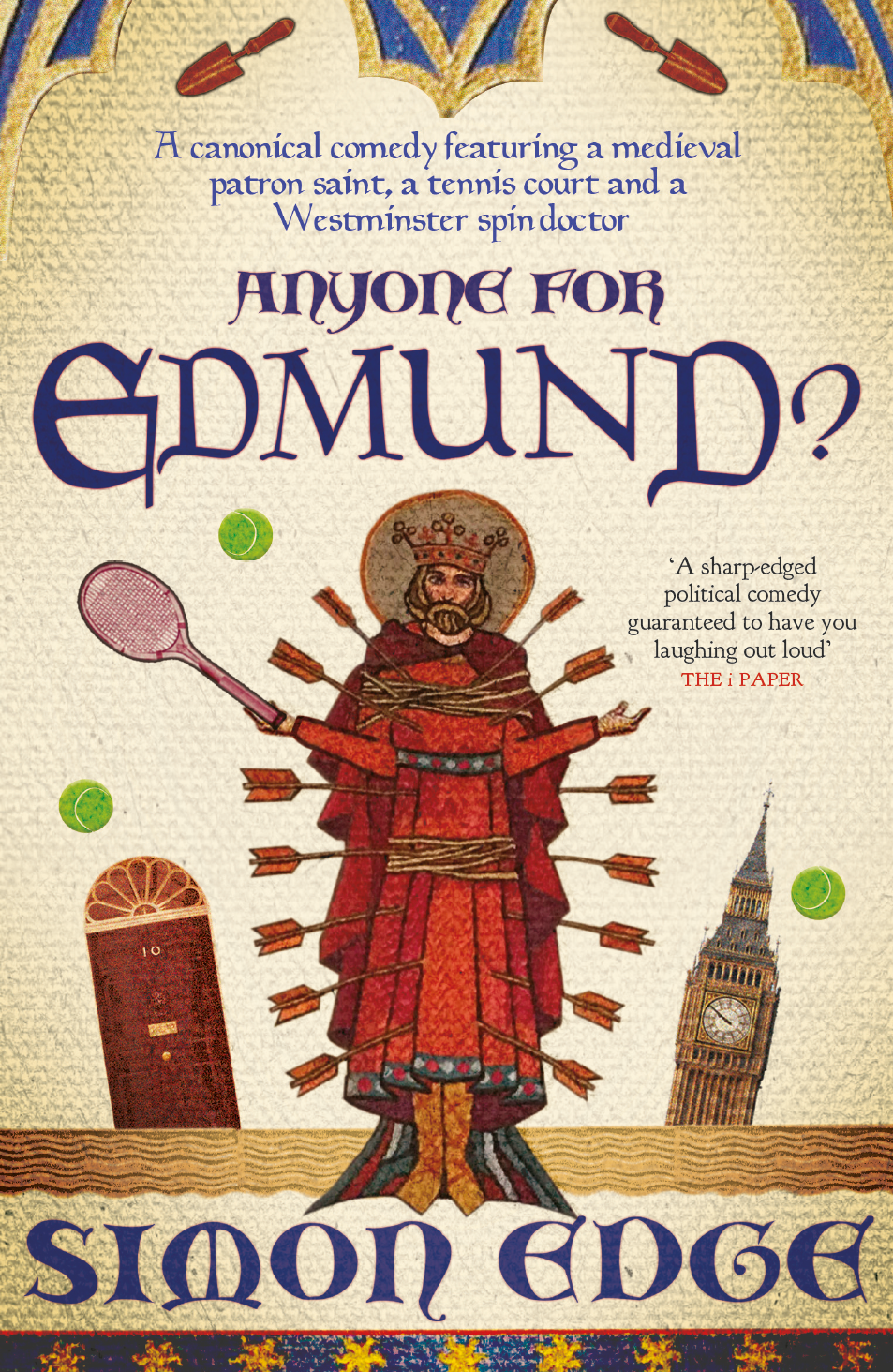Eye Books is a small, independent publisher championing extraordinary stories and overlooked voices since 1996. We publish bold fiction and non-fiction, work closely with our authors, and take pride in bringing unique books to adventurous readers.


They dug up his bones. They didn’t know he had a mind of his own
‘Hilarious and painfully believable’ The Lady
Under tennis courts at a ruined Suffolk abbey, archaeologists make a thrilling find: the remains of St Edmund, king and martyr. He was venerated for centuries as England’s patron saint, but his body has been lost since the closure of the monasteries.
Culture Secretary Marina Spencer, adored by those who don’t know her, jumps on the bandwagon. Egged on by her downtrodden adviser Mark Price, she promotes St Edmund as a new patron saint for the United Kingdom, playing up his Scottish, Welsh and Irish credentials. Unfortunately these credentials are a fiction, invented by Mark in a moment of panic.
As crisis looms, the one person who can see through the whole deception is Mark’s cousin Hannah, a dig volunteer. Will she blow the whistle or help him out? And what of St Edmund himself, watching through the baffling prism of a very different age?
Splicing ancient and modern as he did in The Hopkins Conundrum and A Right Royal Face-Off, Simon Edge pokes fun at Westminster culture and celebrates the cult of a medieval saint in this beguiling and utterly original comedy.
‘Edge’s sharp-edged political comedy is guaranteed to have you laughing out loud as the discovery of St Edmund’s remains underneath a tennis court sets off a farcical chain of events’ The i Paper
‘I loved this smart and divinely wry book, with its perfect marriage of archaeology, patron sainthood, and 10 Downing Street dirt. What a terrific eye and ear is at work here!’ Elinor Lipman
‘Gripping, funny and richly entertaining. Not only a compelling read, but also a story grounded in real history and the genuine questions of national identity that are still thrown up by the legacies of medieval patron saints’ Dr Francis Young, author of Edmund: In Search of England’s Lost King
‘Beautifully written and well crafted, [it’s] at once hilarious and painfully believable...’ The Lady
‘Rich in history and bunk’ Saga Magazine
‘The perfect pick-me-up. Funny and uplifting’ Waitrose Weekend
‘A hugely enjoyable page-turner written with parodic panache’ Yorkshire Times
‘Brilliant – very funny’ Lesley Dolphin, BBC Radio Suffolk
‘This mix of satire, mystery and a few supernatural goings-on makes an entertaining and intriguing read’ Suffolk Magazine
UK postage is free if you spend £20 or more
